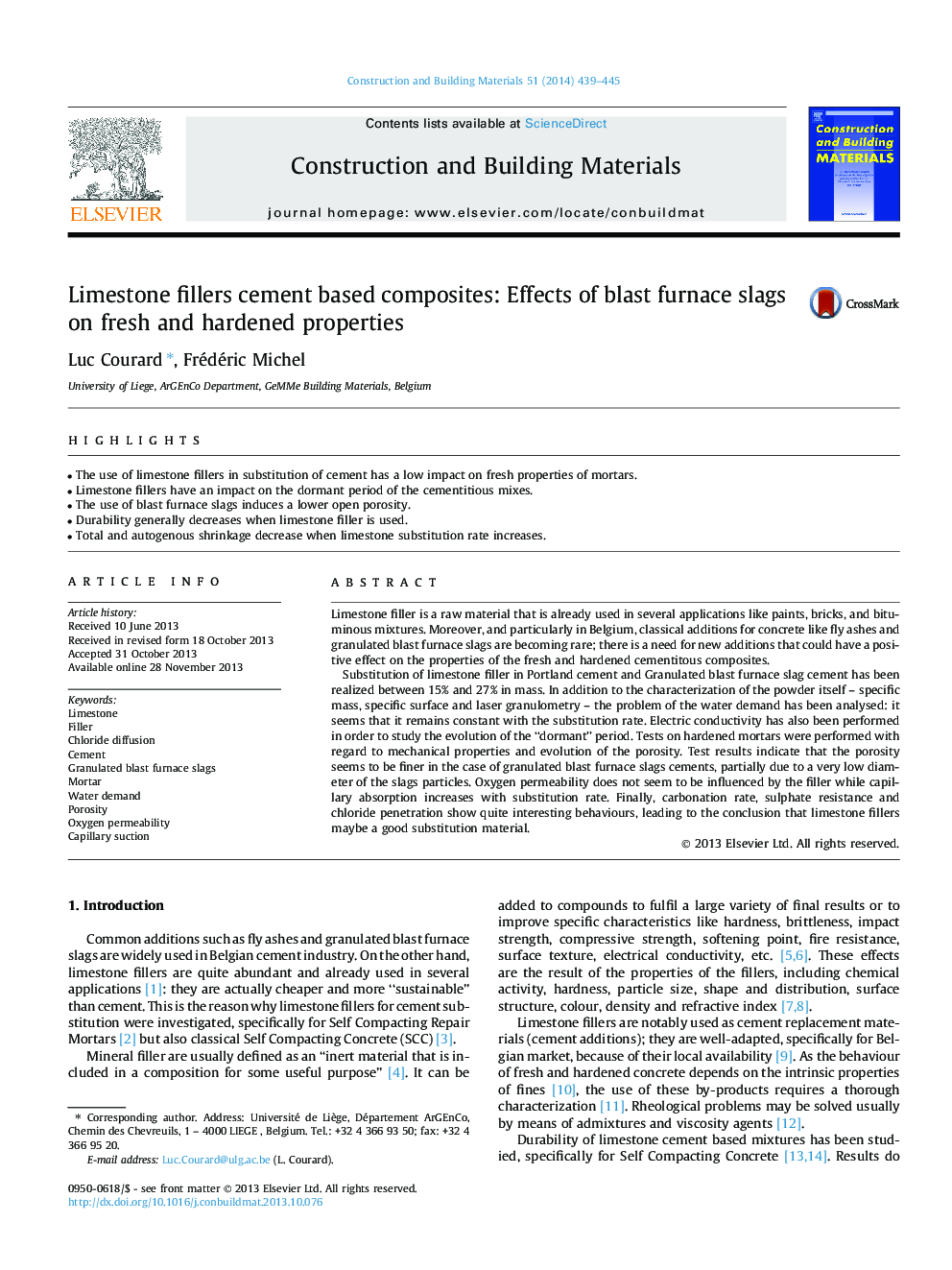| Article ID | Journal | Published Year | Pages | File Type |
|---|---|---|---|---|
| 257988 | Construction and Building Materials | 2014 | 7 Pages |
•The use of limestone fillers in substitution of cement has a low impact on fresh properties of mortars.•Limestone fillers have an impact on the dormant period of the cementitious mixes.•The use of blast furnace slags induces a lower open porosity.•Durability generally decreases when limestone filler is used.•Total and autogenous shrinkage decrease when limestone substitution rate increases.
Limestone filler is a raw material that is already used in several applications like paints, bricks, and bituminous mixtures. Moreover, and particularly in Belgium, classical additions for concrete like fly ashes and granulated blast furnace slags are becoming rare; there is a need for new additions that could have a positive effect on the properties of the fresh and hardened cementitous composites.Substitution of limestone filler in Portland cement and Granulated blast furnace slag cement has been realized between 15% and 27% in mass. In addition to the characterization of the powder itself – specific mass, specific surface and laser granulometry – the problem of the water demand has been analysed: it seems that it remains constant with the substitution rate. Electric conductivity has also been performed in order to study the evolution of the “dormant” period. Tests on hardened mortars were performed with regard to mechanical properties and evolution of the porosity. Test results indicate that the porosity seems to be finer in the case of granulated blast furnace slags cements, partially due to a very low diameter of the slags particles. Oxygen permeability does not seem to be influenced by the filler while capillary absorption increases with substitution rate. Finally, carbonation rate, sulphate resistance and chloride penetration show quite interesting behaviours, leading to the conclusion that limestone fillers maybe a good substitution material.
